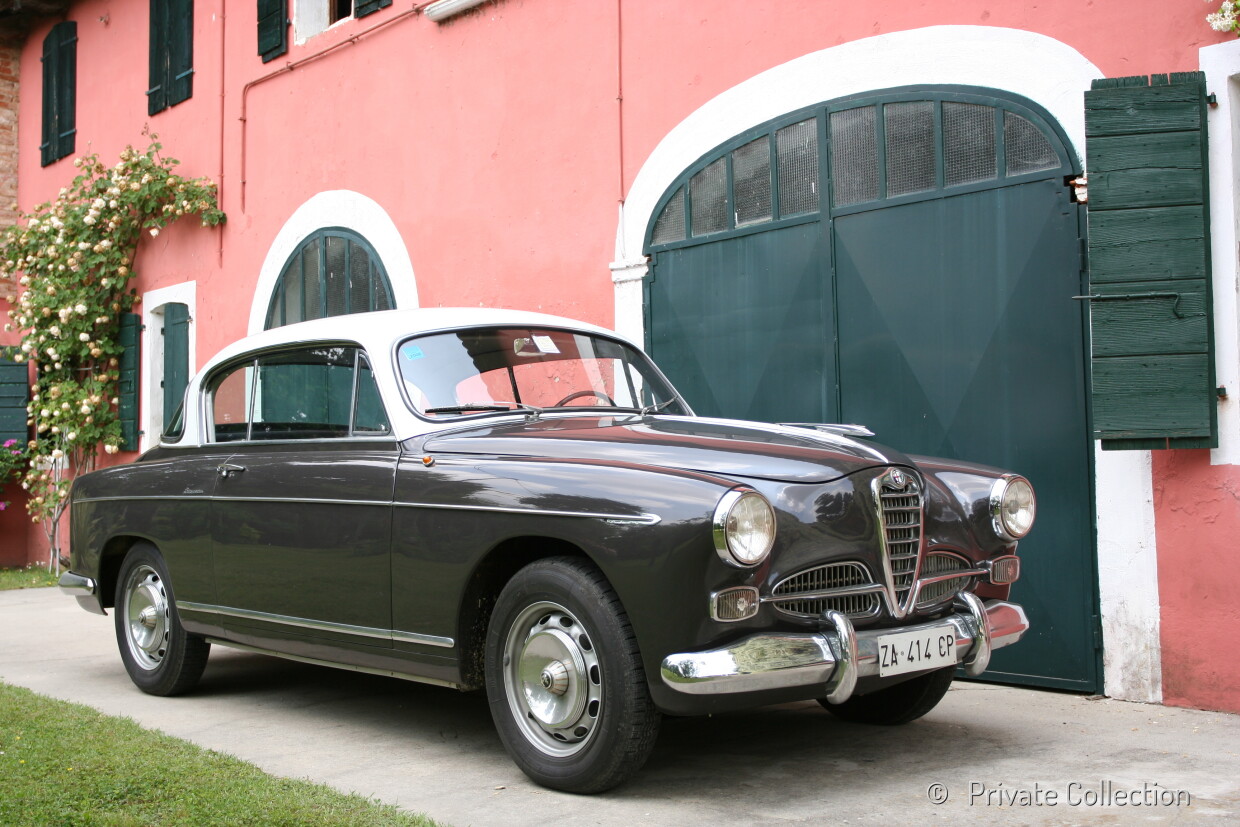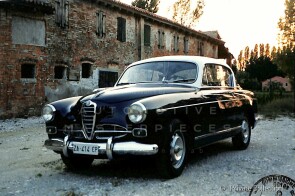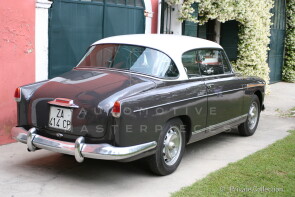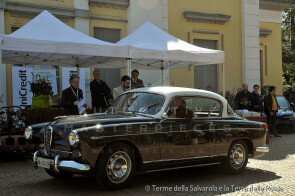
1956 Alfa Romeo 1900 Primavera
ON/OFF
Why am I an Automotive Masterpiece?
In 1950, Alfa Romeo thought it was time to replace the glorious but now old pre-war 6C2500 and to make a car keeping up with new technologies that now were proposing the body integrated into the chassis: a car, so to speak, modern. The car, entirely designed under the supervision of Orazio Satta Puliga, born and developed entirely at the Portello plant, would have contained, like Alfa Romeo tradition, several mechanical refinements. The Alfa Romeo 1900 was built between 1950 and 1959 and was the first entirely new post-war project of the company. It was the first Alfa Romeo built entirely on an assembly line, starting the high-quality mass production at the Portello. First monocoque production car and the first Alfa Romeo with left-hand drive. The heart, as in every Alfa Romeo, was the engine. With the 1900 the Milanese house abandoned the six and eight cylinders engines in favor of a fractioning that allowed a lower taxation. Instead, they were in light alloy, with two overhead camshafts and hemispherical chambers. Giuseppe Busso opted for an independent double wishbones front suspension. The rear suspension was new: the live axle with coil springs was connected to the chassis by two lower struts and a top triangle. The aluminum drum brakes were finned and the rims of the wheels equipped with slits to help cooling. The 1900 was one of the very first automobiles in the world to adopt radial tires. The configuration, the design of all the monocoque laminates and even the study of production equipment were carried out at the Portello. The first road exit took place on March 2, 1950 with Consalvo Sanesi driving. The shape was the result of a refining by Orazio Satta Puliga and Antonio Alessio. He consulted Gaetano Ponzoni, of the Touring that suggested significant finishing touches. The gear lever by the steering wheel allowed two three-seater sofas. The bakelite steering wheel had a horn ring. The dashboard had a large semi-circular speed indicator with oil pressure gauge and fuel gauge on each side. In the middle, the housing for the radio or the tachometer. The 1900 four-door sedan was the only model available until the introduction of the 1900C coupe in 1951 and the TI saloon in 1952, it was equipped with a 1.9-liter engine that delivered 90 hp and reached a top speed of 171 km/h. Production ceased in 1959 with a total of 17,243 cars produced in the various models. It was the “Alfona” for the most, the “Pantera” for excellence, “the family car that wins the races” in the slogans. She was much loved and also very feared.
Iginio Alessio, then general manager of Alfa Romeo, was concerned for the viability of the independent Italian Coachbuilding industry–the avant of the unibody chassis design was threatening to put the carrozzerie out of business. The 1900 chassis was used by many coachbuilders to their designs for one-offs or small series production. In 1953, Mario Felice Boano sold Ghia to Segre and in 1954 started his own firm. Boano managed his firm, in conjunction with his son, Gian Paolo, until the end of 1957. In this period of time, between 1955 and 1957, the Turin Coachbuilder Boano built the Primavera (Spring) two-door saloon. The body of this coupé was built on a chassis of the 1900 Super Saloon, a completely new coachwork was done without changing the wheelbase of the four-door. At a first glance, the front and the roofline seem similar but instead are different. For example, the contours of the Primavera are much more pronounced, the front and rear wings sit higher and are more eye-catchingly styled, and even the bonnet is of a different shape from that of the Berlina. The new car was offered as coupé although front bench seat, steering wheel-mounted gearshift, interior space and luggage compartment were comparable to the four-door. Both front side windows without frames and rear side windows can disappear right down. The mechanical basis for the Primavera is the 1900 Super. Alfa Romeo nevertheless included the model in its official catalogue and distributed it through its own dealer network. At 2,595,000 lire, the retail price was still 300,000 lire above the price of the 1900 Super. The Alfa Romeo 1900 Primavera production figures were as follows: 1955 4 cars, 1956 286 cars, 1957 10 cars. Few changes were made to the body after a short period in production, reference is made to the first and second series. It is believed that after 13 cars the body design was changed. The most visible change is the positioning of the moldings. A continuous side trim strip, from the lights through the wings, is replaced by a version that is angular in the sections and outlines the two-tone paint. The rear bumper is now in one piece, in place of the previous one that was in three pieces, and some details on the dashboard have been modified. Overall, these changes result in a resemblance to the 1900 Super Saloon. In 1957, Boano transferred his company to his son-in-law, Ezio Ellena, (husband of Gian Paolo’s sister) who took over with his old partner Luciano Pollo. Then, in 1957, Boano was hired as the head of FIAT Centro Stile.
Chassis AR1900*15806 is believed to be still a first series. This chassis number corresponds to the production of early 1956 and the body has a color scheme and moldings typical of the first series. In any case, there are very few 1900 Primavera survived today.




